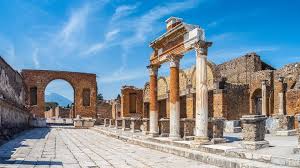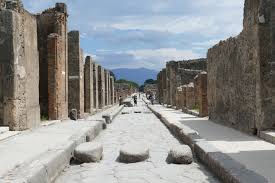When referring to the archaeological site of Pompeii, one of the best known and most visited in the world, our thoughts cannot help but immediately go to the terrible eruption of 79 AD. which, within a few hours, submerged the whole city, covering it with a layer of more than six metres.
Ancient Pompeii stands on a plateau formed following an eruption that occurred thousands of years ago and stands near the Sarno river, at the mouth of which stood a thriving port. Information about the origins of the city is rather uncertain. Some testimonies date the foundation of the city between the end of the 7th and the middle of the 6th century BC. It was a mixed community of villages and indigenous populations, with strong Oscan, Etruscan, Greek and Samnite influences. Sided against Rome during the social war, the city was finally conquered by General Silla in 89 BC, who changed its name to Colonia Cornelia Veneria Pompeianorum, being very devoted to the goddess Venus. The inhabitants will therefore become Roman citizens and the city will receive the status of municipium. Struck by a very violent earthquake in 65 AD, it was subsequently destroyed and covered by ash and volcanic material, which would continue to fall on the city for several days, until its memory was completely erased for over six centuries.
Its rediscovery occurred in the 16th century, but the actual exploration only began in 1748, thanks to the strong interest nurtured in antiquity by the King of Naples, Charles III of Bourbon. Excavations were subsequently resumed, in a more systematic way, in the 19th and 20th centuries, under the direction of some great archaeologists such as Giuseppe Fiorelli and Amedeo Maiuri. The surface of the archaeological area of Pompeii is quite extensive and a visit to the excavations is truly stimulating and fascinating, above all in the light of the very recent discoveries of region V, a section of the city which has still remained buried under the ash and which has recently been been the subject of investigation thanks to funding linked to the great Pompeii project, a project created on the initiative of the Italian Government to promote the protection and enhancement of the archaeological area with a program of conservation, prevention, maintenance and restorations.



